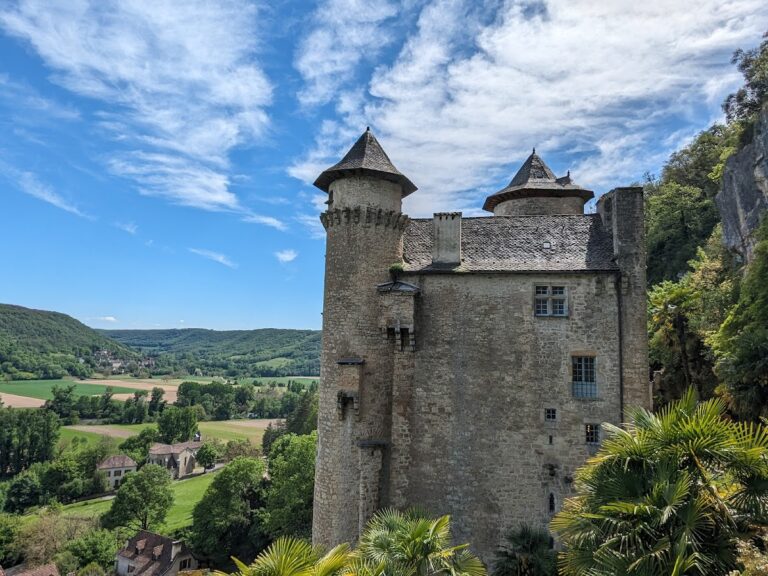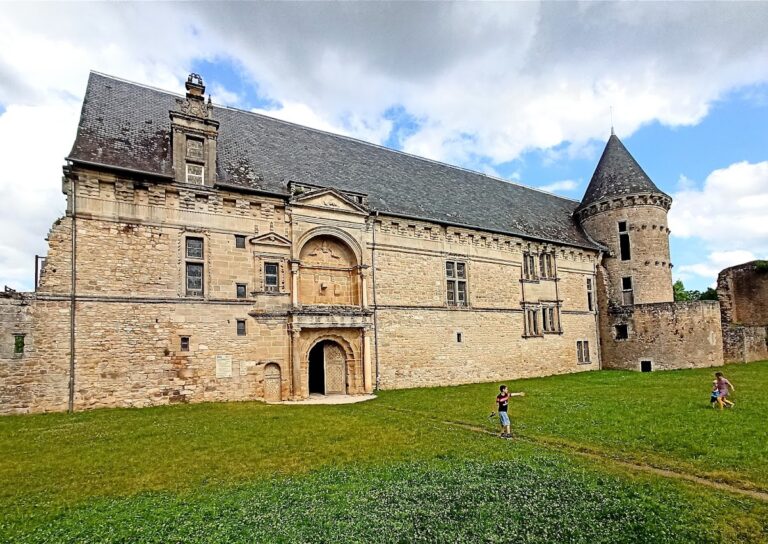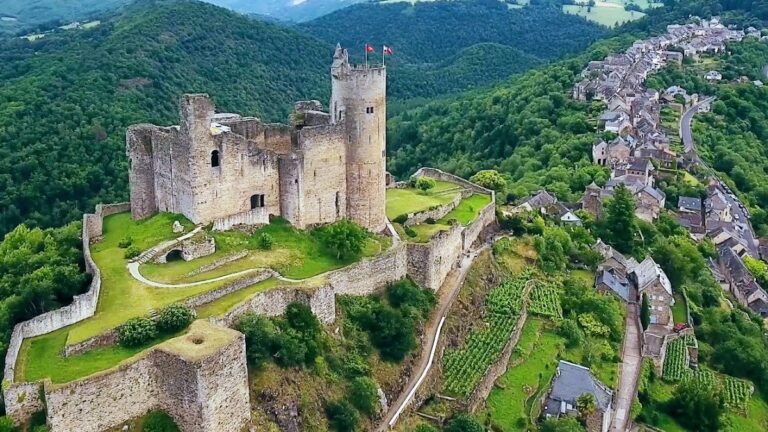Château de Cénevières: A Historic Renaissance Castle in France
Visitor Information
Google Rating: 4.6
Popularity: Medium
Google Maps: View on Google Maps
Official Website: www.chateau-cenevieres.com
Country: France
Civilization: Unclassified
Remains: Military
History
The Château de Cénevières stands in the commune of Cénevières, France, and was originally constructed by medieval European builders. Its history spans several centuries, reflecting changing political and social circumstances in the region.
The earliest known origins of the castle date from the 13th century, although tradition links the site to events of the 8th century. According to local legend, the castle was once held by Waïffe (Waiffer), Duke of Aquitaine, and was the focus of a protracted conflict against Pepin the Short. This ruler of the Frankish kingdom captured the fortress in 767 after a siege lasting four years, signaling the site’s strategic importance in early medieval power struggles.
Between the 9th and 14th centuries, the La Popie family, who were lords of Cénevières, developed and inhabited the castle. Ownership changed during the 12th century when the vicomtes de Gourdon-Cénevières acquired it through purchase, marking a transition from hereditary lordship to feudal vicomté control.
The early 16th century saw a significant transformation under Flottard de Gourdon, Viscount of Cénevières and Gaiffier. A participant in key military engagements such as the battles of Marignan (1515) and Pavia (1525), he was wounded and taken prisoner during these conflicts. Upon his return, he initiated the remodeling of the stronghold, converting it from a medieval fortress into a residence reflecting Renaissance architectural and cultural influences.
During the late 16th and early 17th centuries, Antoine de Gourdon, a knight and leader among the Protestant faction in the French Wars of Religion, resided at the château. He hosted notable figures, including King Henri IV of France and the theologian Théodore de Bèze, emphasizing the site’s role as a center for religious and political gatherings. In 1612, the castle’s status was elevated when Louis XIII raised it to a marquisate, highlighting its continued noble significance.
Throughout the 17th and 18th centuries, the castle remained under the ownership of noble families such as La Tour du Pin, who maintained connections with the royal court, including King Louis XIV and Madame de Maintenon. The building survived the widespread destruction of the French Revolution; although looted in 1789, it escaped being burned.
In 1793, the château was sold to Louis Naurissart, a prominent political figure of the time, initiating continuous ownership by the Naurissart-Labiche family line. Successive proprietors throughout the 19th and 20th centuries, including the Lesage and de Combarel du Gibanel families, carried out restorations to preserve the castle. Its cultural and historic importance was officially recognized in 1957 when it was classified as a Monument Historique, a protective status that also included its surrounding walls and an adjacent former Protestant temple. The castle remains privately held, undergoing ongoing care to maintain its heritage.
Remains
The Château de Cénevières is built in the Renaissance style, set prominently on a rocky cliff that provides a commanding view of the surrounding landscape. Its architectural form consists of an irregular grouping of buildings arranged atop the outcrop, surrounded and complemented by defensive towers and terraces that adapt to the natural rock formations beneath.
One notable element of the castle’s design is a connecting wall that once served as a rampart, linking the stables to the Gourdon Tower. This tower may have originally functioned as the keep, the central fortified structure. The defensive nature of the castle is further emphasized by the presence of a square guard tower, or postern, constructed in 1585, which was positioned in front of the main entrance to oversee access.
Many of the original Gothic window openings have been enlarged or replaced with broad Renaissance-style windows, reflecting the shift in architectural tastes during the castle’s transformation in the 16th century. Old defensive walls have been altered to include dormer windows, introducing light and ventilation into spaces once designed mainly for security.
The grand salon of the château is surrounded on its exterior side by a columned gallery, a feature characteristic of Renaissance design. Within this room, traces of painted frescoes remain, depicting scenes from classical mythology and ancient legend. These include imagery such as the flight of Icarus, the chariot of the sun, the legend of Astyanax, the burning of Troy, and the abduction of Helen, revealing both artistic ambition and the cultural interests of the castle’s historical owners.
Internally, the château contains a chapel notable for its consecrated altar, which holds a relic associated with the Holy Shroud, indicating a significant religious function. Additionally, a cabinet of alchemy within the residence is adorned with mythological frescoes, suggesting the presence of study or contemplation related to early scientific or spiritual inquiry.
Constructed primarily from masonry, the castle features robust walls and defensive elements such as machicolations—projecting parapets with openings through which defenders could drop objects on attackers—and a prominent donjon, or keep, which remains visible today. The structure’s preservation is in good condition due to ongoing restoration efforts conducted by its current owners.
Alongside the castle itself, its enclosing wall and a former Protestant temple at the entrance have also been recognized for their historical value and are protected as part of the overall historic monument designation. These components contribute to the comprehensive understanding of the site’s function as both a noble residence and a place of religious significance over many centuries.










